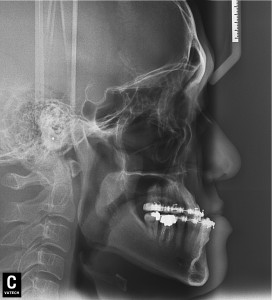In this day and age, with the internet bursting with information, the average person is now more aware of the people around him and the conditions affecting them. At Specialist Dental Group, we see a lot of patients, young and old, coming forth to seek advice and treatment for their jaw conditions. An asymmetrical jaw may affect one’s ability to chew and speak, and also impact upon the appearance.
Types of jaw conditions
Jaw skeletal relationships can be broadly categorised into 3 types:
- Class 1 which is a normal or average jaw relationship;
- Class 2 which is a short lower jaw – In very severe cases, the face looks very convex like an egg or a bird like face.
- Class 3 which is a long lower jaw. The face looks concave with the lower lip protruding outwards.

In Class 2 and Class 3 cases, affected patients are unable to use their front teeth to cut food as there is a big discrepancy or gap between the upper and lower front teeth. Therefore, correcting the teeth position via braces treatment and/or jaw surgery will greatly improve the chewing function.
The growth discrepancy of the lower jaw may also be influenced by the growth discrepancy of the upper jaw. Depending on the condition, surgical treatment may be limited to one jaw or may involve both jaws.
Seeking treatment
You will need to see a qualified specialist orthodontist and oral maxillofacial surgeon who usually work as a team to manage jaw and teeth conditions. The diagnosis of your jaw condition is of prime importance as subsequent treatment hinges primarily upon it. Once the diagnosis is reached, a treatment plan can then be formulated and presented to you.
Treatment
If orthodontics and jaw surgery (orthognathic surgery) are deemed to be the ideal treatment of choice for your condition, the treatment will commence with orthodontics first. There is a big difference between routine orthodontic treatment and orthodontic treatment in preparation for jaw surgery. It is almost impossible to convert a surgical case into a non-surgical case once treatment has started. So it is very important for patients to discuss their options properly, carefully and in detail with the treatment team and their family members.
Timeline
- Pre-surgery orthodontics typically takes two years to complete.
- Jaw surgery then follows
- Post-surgery orthodontics usually commences one month after jaw surgery and will take another six months to complete.
What to expect for jaw surgery
For jaw surgery procedures, patients will need to be admitted into the hospital and the procedure is done under general anaesthesia.
Immediately after the surgery, the patient’s upper and lower jaw will be tied together in the new position with elastics. The bones are held together with titanium plates which will stay permanently. During the two week period when the jaws are tied together, the patient will depend on fluid supplements for dietary requirements. Weight loss is an inevitable side effect which is welcomed by most if not all patients!
Patients who are undergoing orthodontics with jaw surgery need to be very committed and motivated. Having these two virtues will see the patient breeze through the entire treatment process. A brand new look and smile with improved function and greatly enhanced self-confidence is theirs for the long-term at the end of the treatment.
If you would like more information on jaw surgery and orthodontics, you can make an enquiry on the Specialist Dental Group website, or book an appointment online. If you have undergone jaw surgery, and would like to share your story and tips with others who are experiencing the same condition, feel free to post your comments.





